Making Friends With Your Sewing Machine: What Are All the Different Bits and What Do They Do?
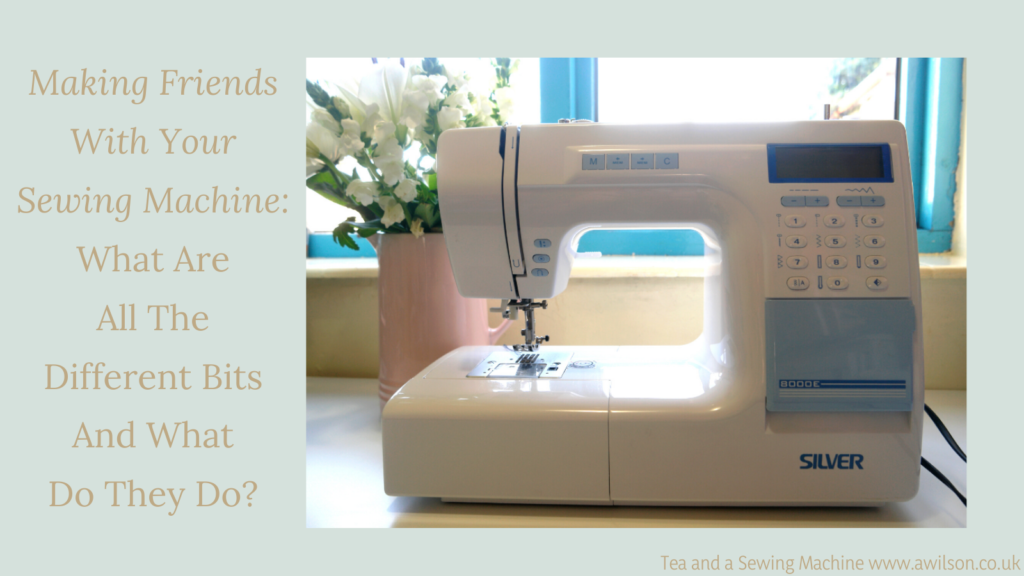
When you buy a new sewing machine and get it out the box, one of the things you’ll probably notice straight away is that there are an awful lot of buttons, little knobs and hooky things. So the first job is to find out what they all do so that you can start sewing!
This is true not only if you are a beginner, but also if you’ve been sewing for a bit longer and you’ve upgraded an older sewing machine to a more modern one. My first sewing machine was an elderly Singer from the 1970s. For the last 5 years, I’ve been using a Silver 8000e. The Singer only had 2 stitches and the bobbin winder didn’t work, whereas the Silver is computerised and has lots of stitches.
Some of the things on your machine might look different, or they might be in a slightly different place, but there’s enough similarity between different sewing machines that I hope you’ll still find it useful.
On/ Off Switch
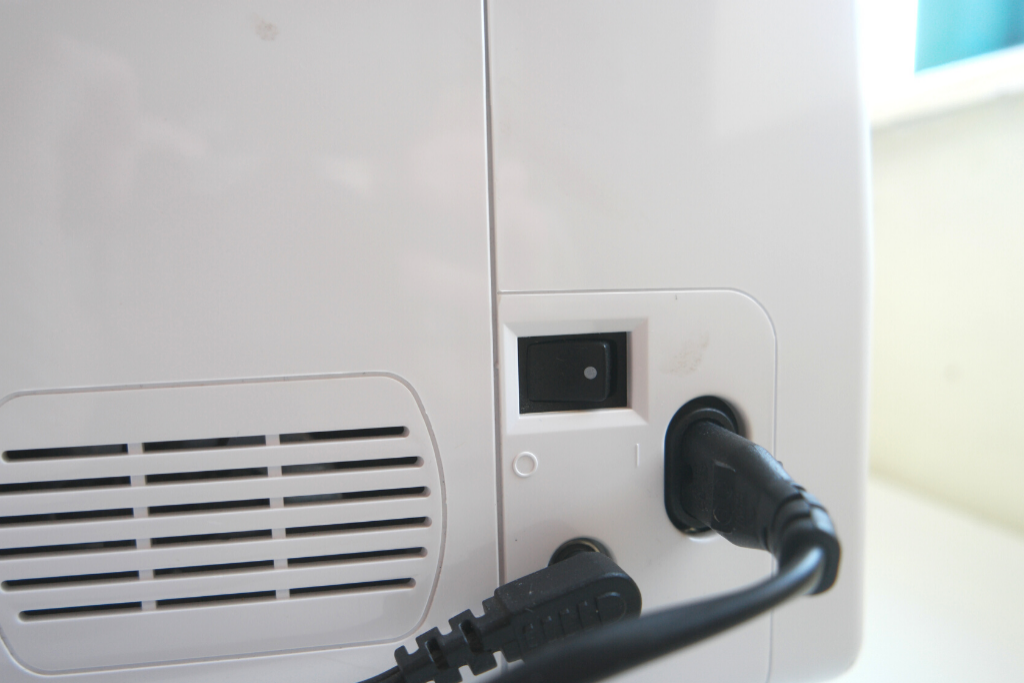
This is usually near the base of the machine, either at the side or round the back. The sensible advice is to leave it turned off until you’re ready to sew, but if you have middle aged lady eye sight problems like I do, it’s going to be much easier to thread the needle if the light’s on. For that the sewing machine will need to be plugged in and switched on. Just keep your foot away from the foot pedal or you might end up sewing over your fingers and that hurts. Guess how I know!
Spool Holder
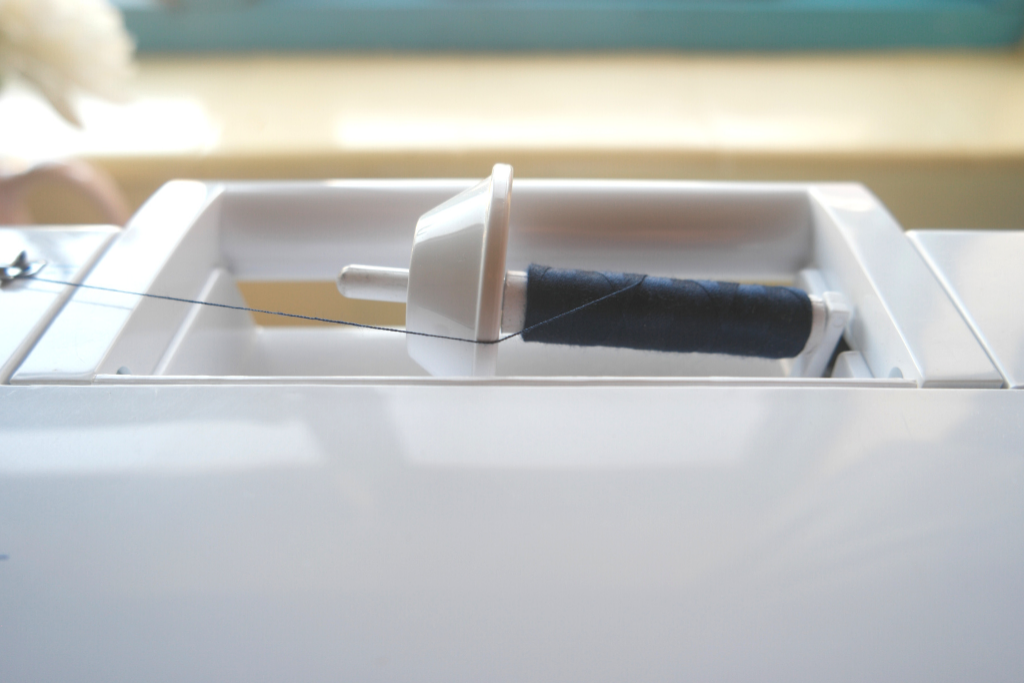
The spool of thread goes here. Usually the spool needs to be a certain way round. On my sewing machine, the thread should go over the top of the spool so it rolls towards you when you pull it.
There’s often a little plastic thing that goes over the end to stop the spool from flying off mid sewing.
Bobbin Spool Pin
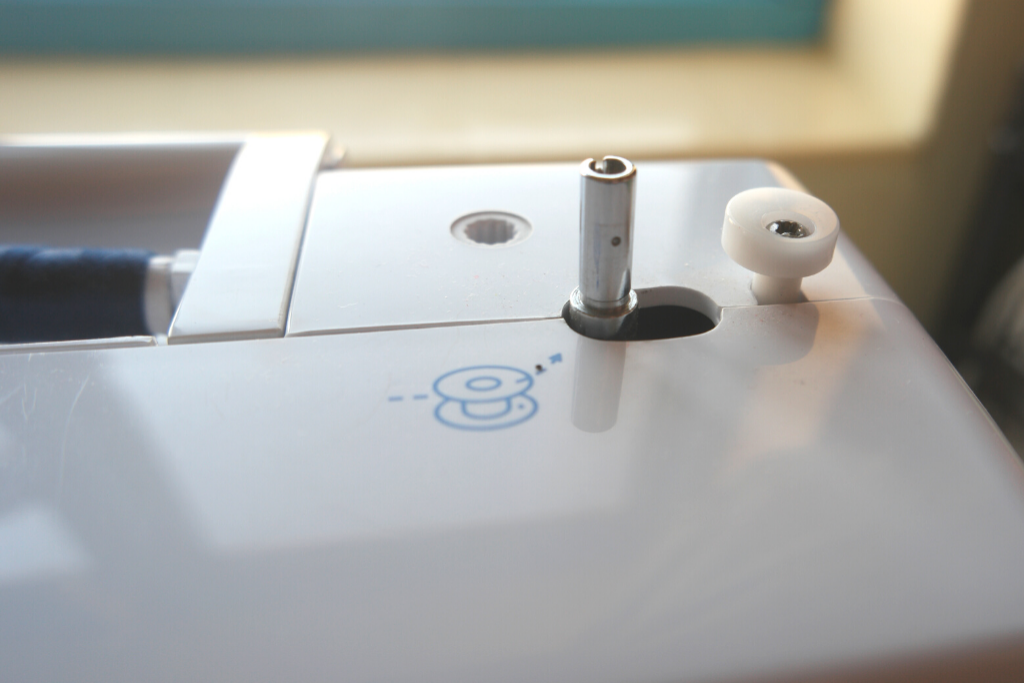
This is where you put the bobbin when you need to wind more thread onto it. The spool of thread will stay where it is, but you’ll need to rethread the sewing machine.
Fly Wheel
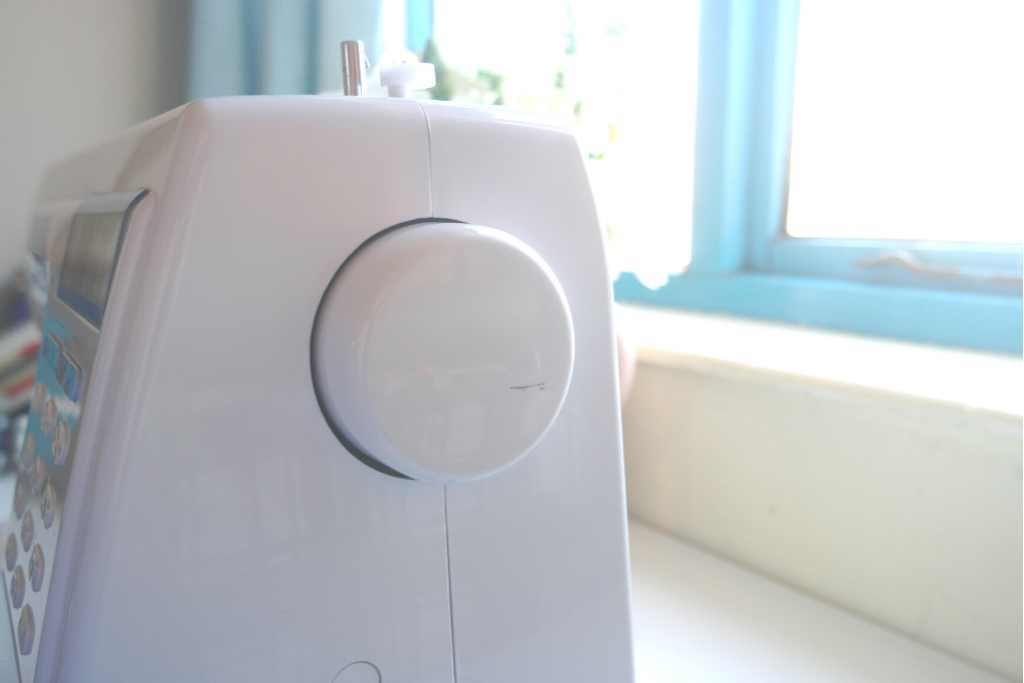
The fly wheel turns when you’re sewing. It’s also the way to lift the needle manually. Turn it away from yourself gently and the needle will left up. This is useful if you end up with getting stuck or if you’re in a tangle. It’s also the way you get the needle to rise when you are pulling the bobbin thread through (more about that in a later post!)
Bobbin Winder Tension Disc
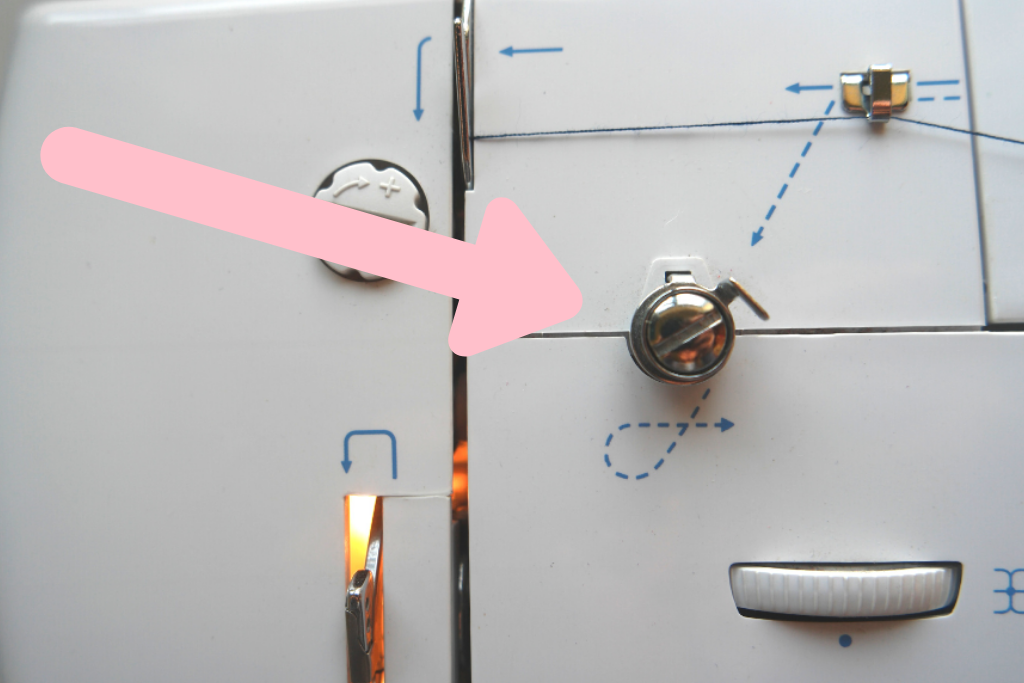
The thread goes round here when you need to wind thread around the bobbin. It keeps the thread taut so that it winds evenly.
Tension Dial

The tension dial controls the tension of the thread. A higher number means more tension. Usually you’ll need it on 4, which is about half way. Problems can arise if the tension is wrong, but often what appears to be a tension issue is actually something else. The best advice I can give is to leave it well alone unless you’re sure! More about this another time!
Thread Take Up Lever
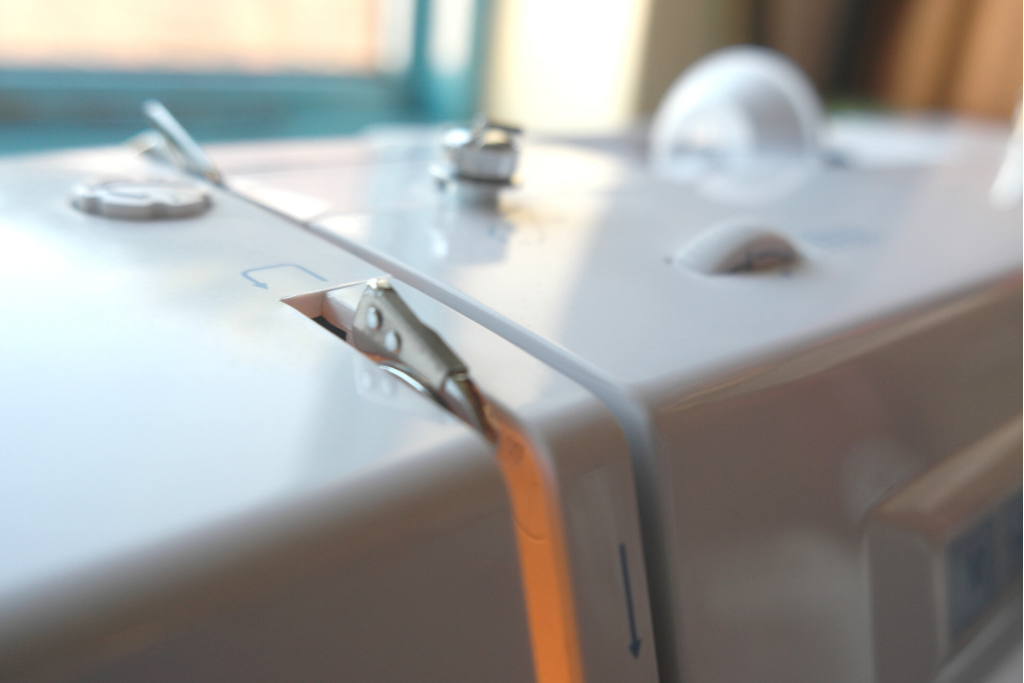
This makes the thread go up and down, which makes the stitches.
Tensions Discs
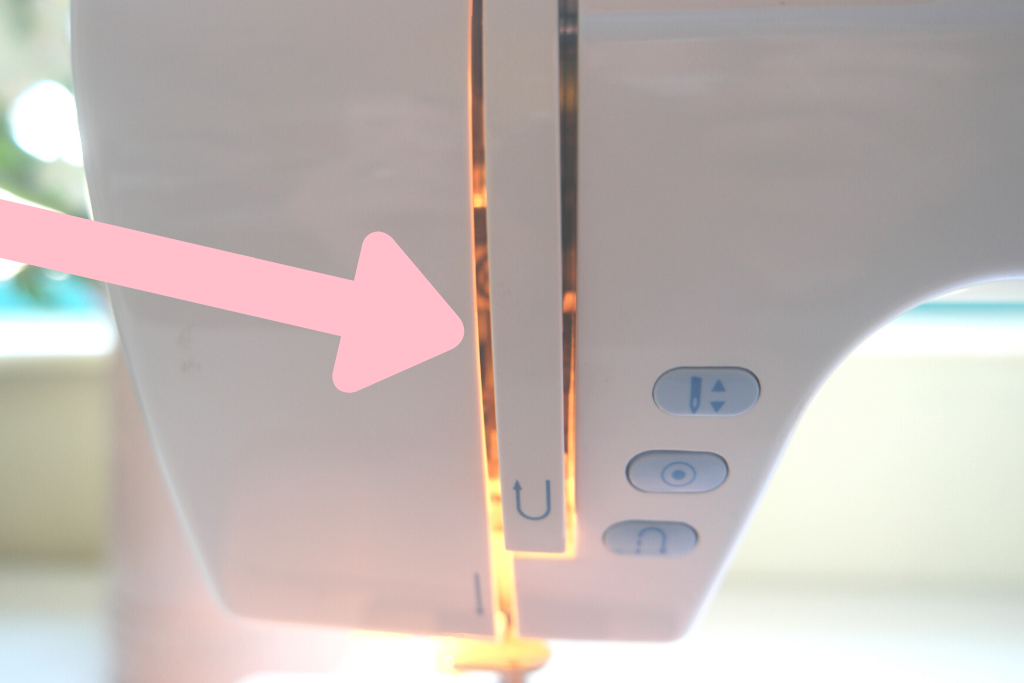
On my sewing machine, the tension discs are inside the sewing machine, but on my Singer they were on the outside. They hold the thread taught while you are sewing and are controlled by the tension dial.
Thread Guide
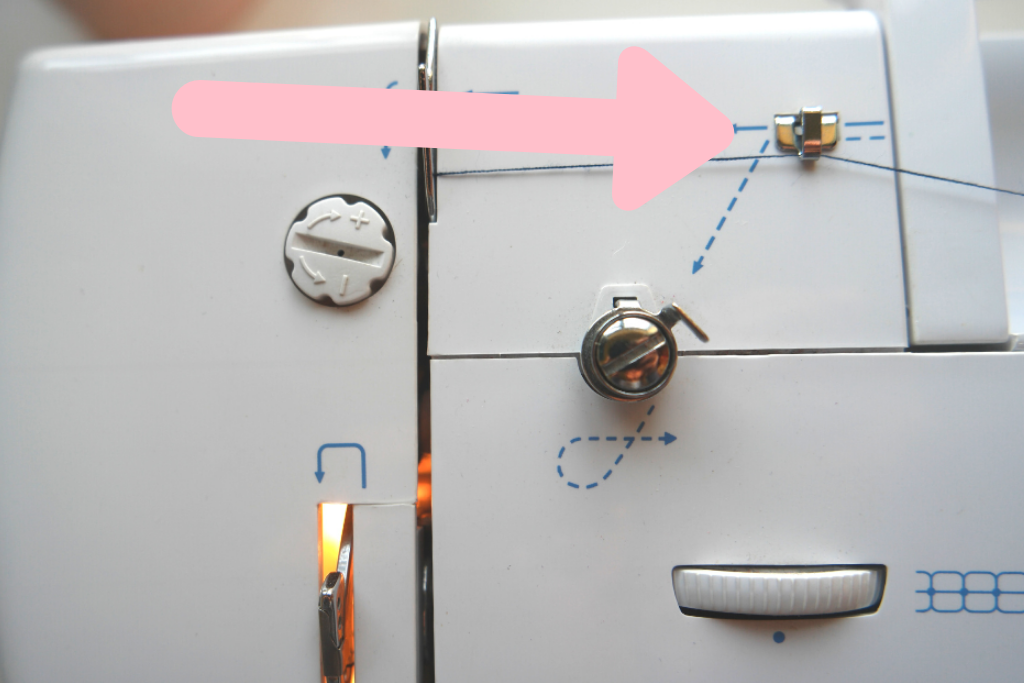
There might be several of these on your machine. They hold the thread in place while you are sewing, and they keep the thread is in the right place so that it can go around the necessary things like the tension discs and the take up lever.
Stitch Selector
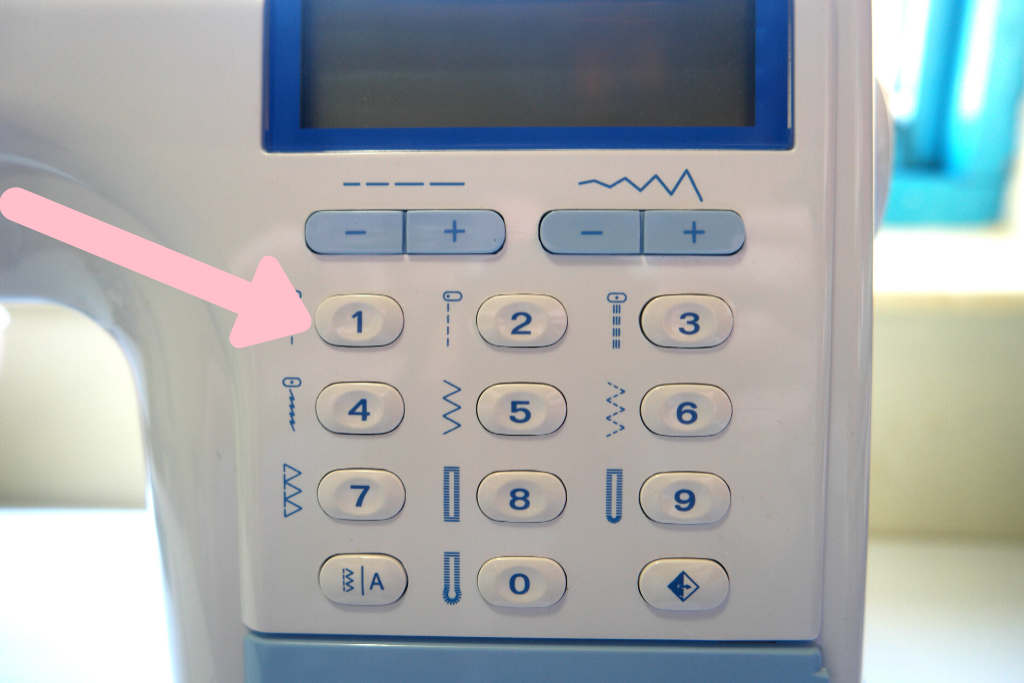
This enables you to choose which stich you’d like to use. Modern machines often have a baffling amount of choice when it comes to stitches! Some you’ll use for ordinary sewing, there might be others for sewing with knits and others for finishing edges and for embroidery.
On some machines the stitch selector is a dial.
Stitch Length Selector
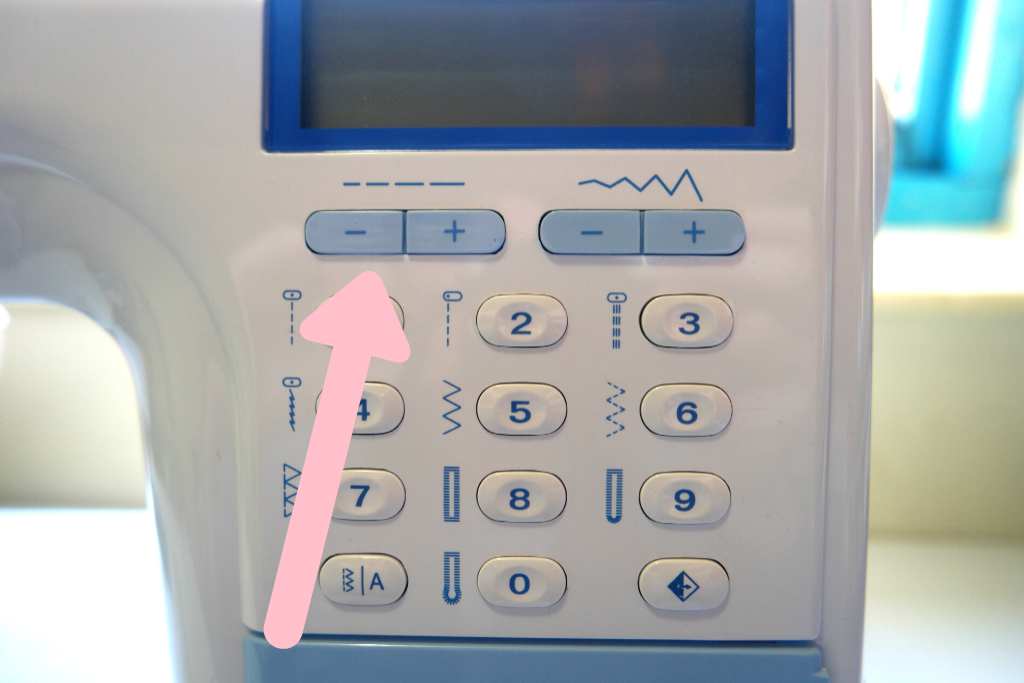
This allows you to determine the length of your stitches. Depending on your machine, you might also have an option to choose width of zigzags as well as how stretched out they are.
Like the stitch selector, this is sometimes a dial on different sewing machines.
Needle
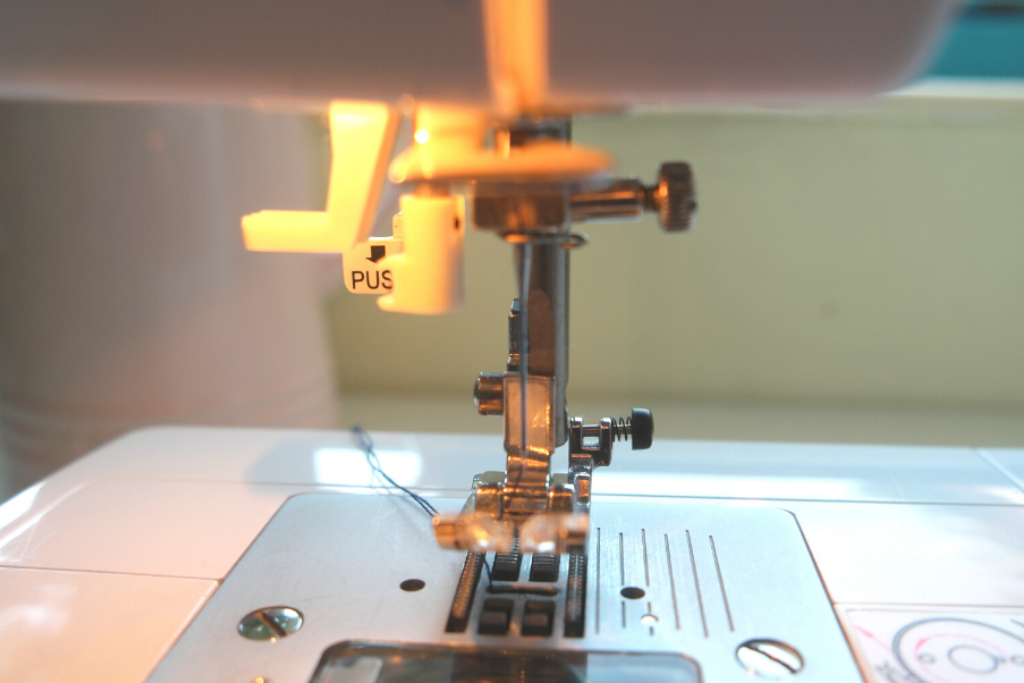
The needle is usually threaded from front to back. If you struggle with threading the needle, turning the light on on your sewing machine might help.
Needle Clamp
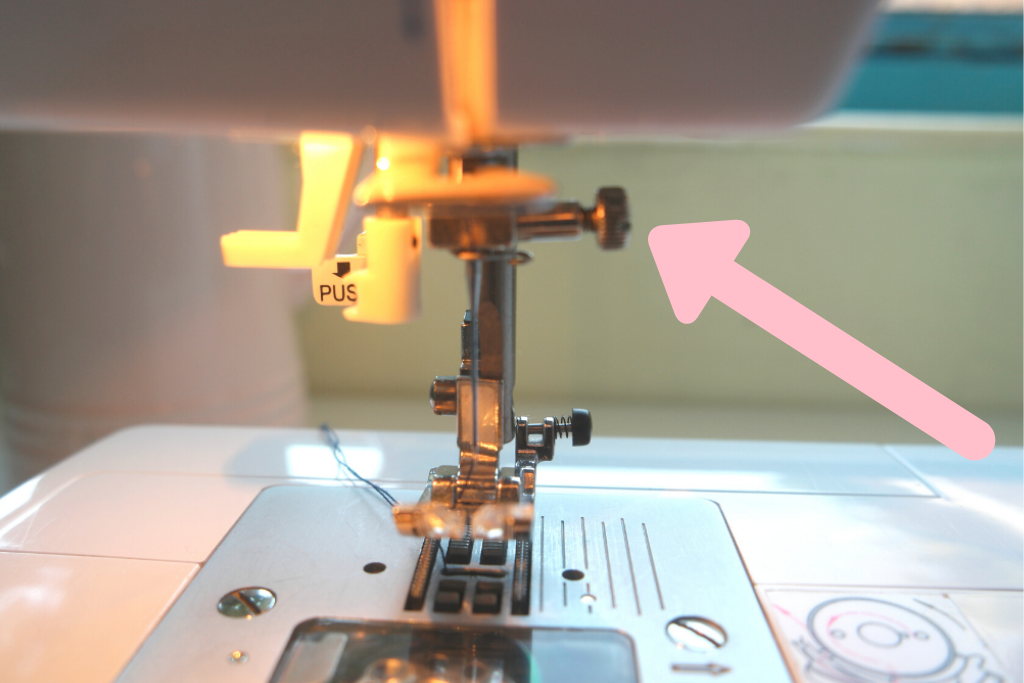
The needle clamp holds the needle. Sewing machine needles are flat on one side and curved on the other, so it has to go in a certain way round. Make sure you do it up tightly or the needle will fall out while you’re sewing!
Presser Foot
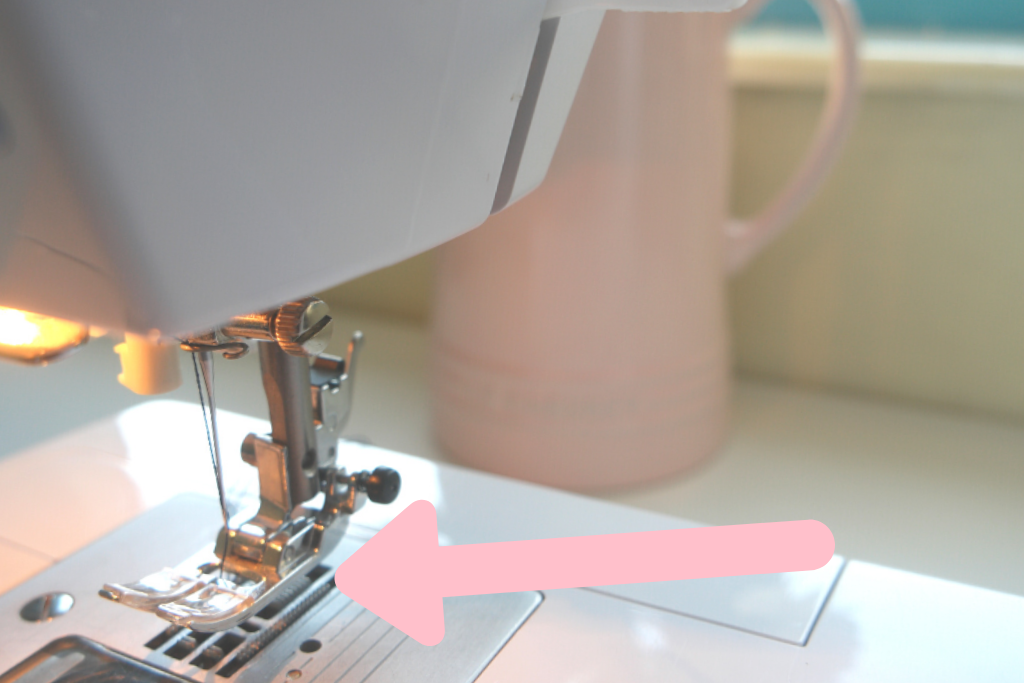
The presser foot helps to control how the fabric moves along while you are sewing.
Presser Foot Lever
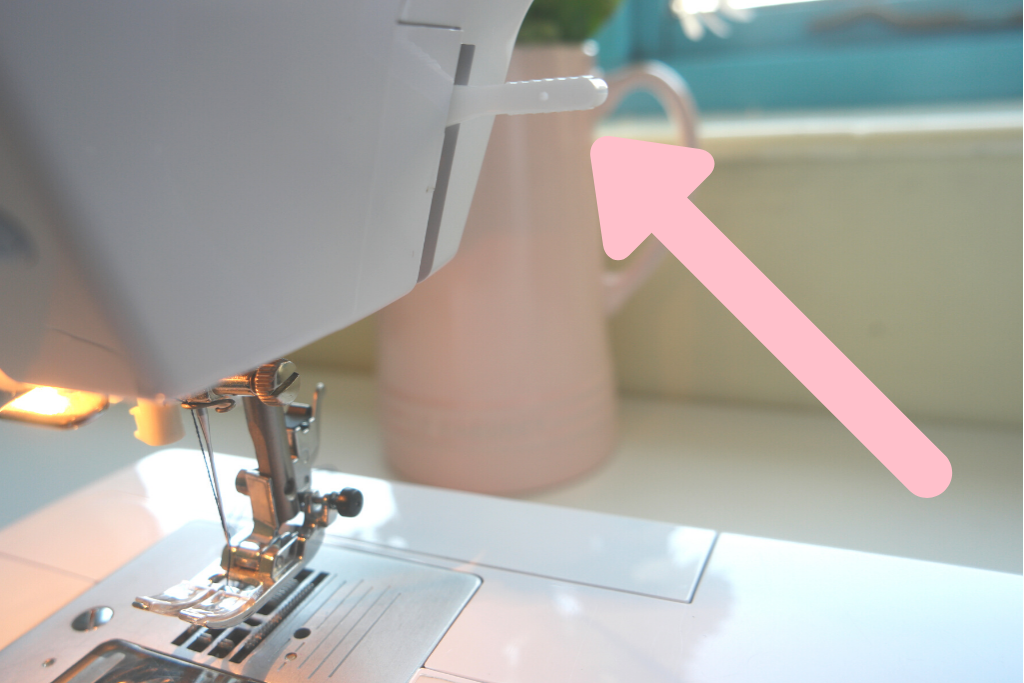
This little lever raises and lowers the presser foot. It will be near the presser foot, either on one side or round the back.
Light

Very useful, especially for threading the needle and for late night/ early mornng sewing!
Light Switch
With some sewing machines, the light comes on automatically when you turn the machine on. Otherwise there will be a separate little switch, probably near the light.
Feed Dogs
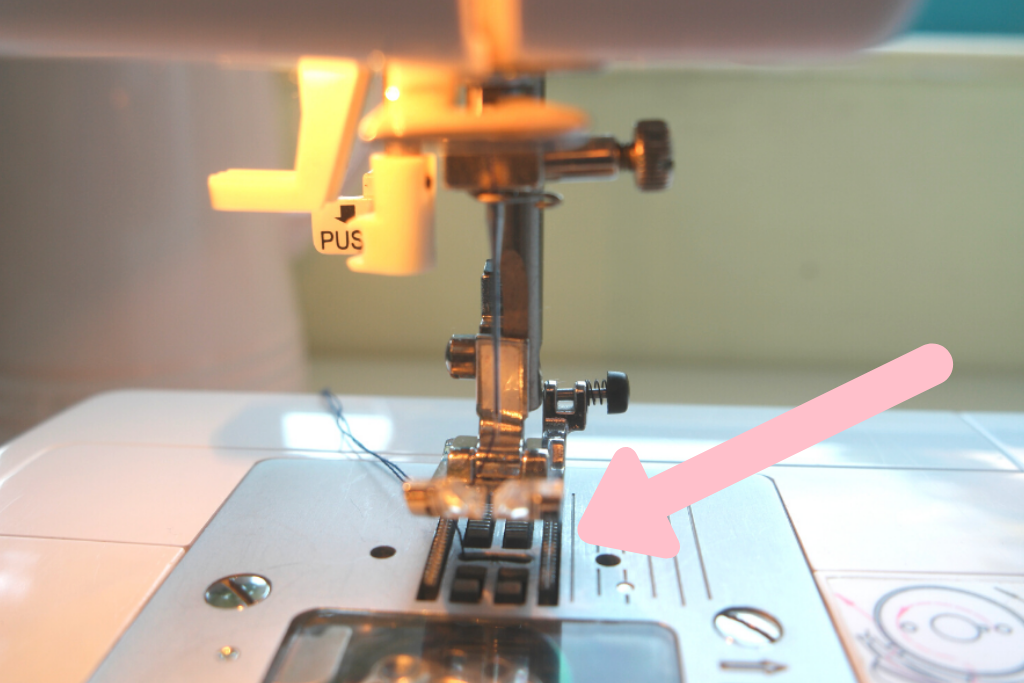
The feed dogs are 2 rows of metal teeth that stick out through the needle plate. They guide the fabric through while you are sewing, and are controlled by the foot pedal.
Needle Plate
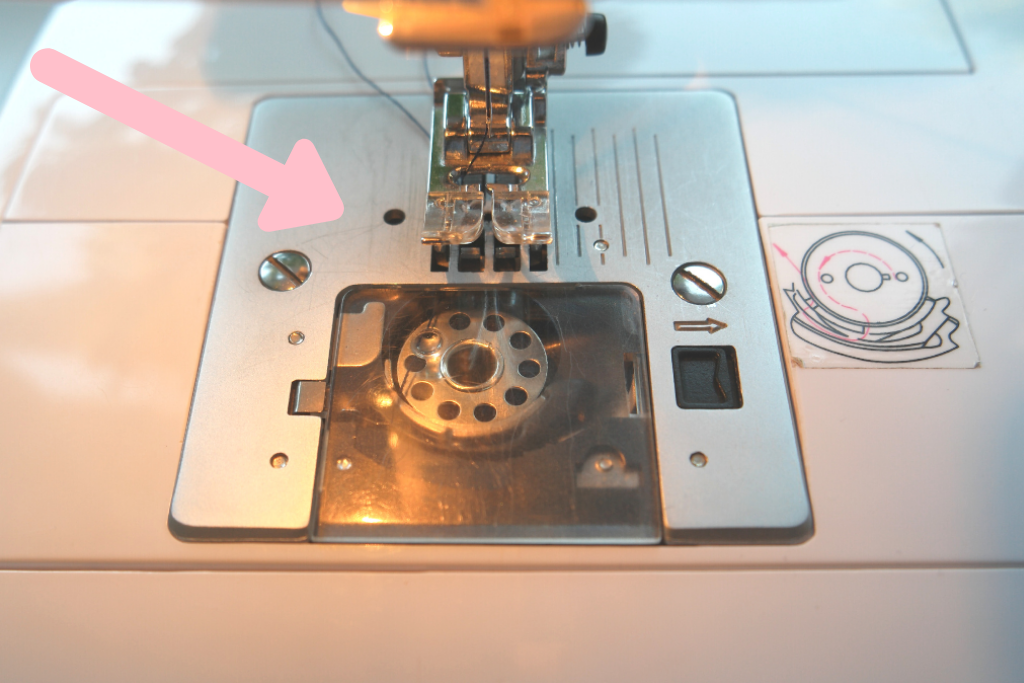
When you are sewing, the needle goes up and down into the little hole into the bobbin area. It will often have lines marked on it to help with seam allowances.
Bobbin
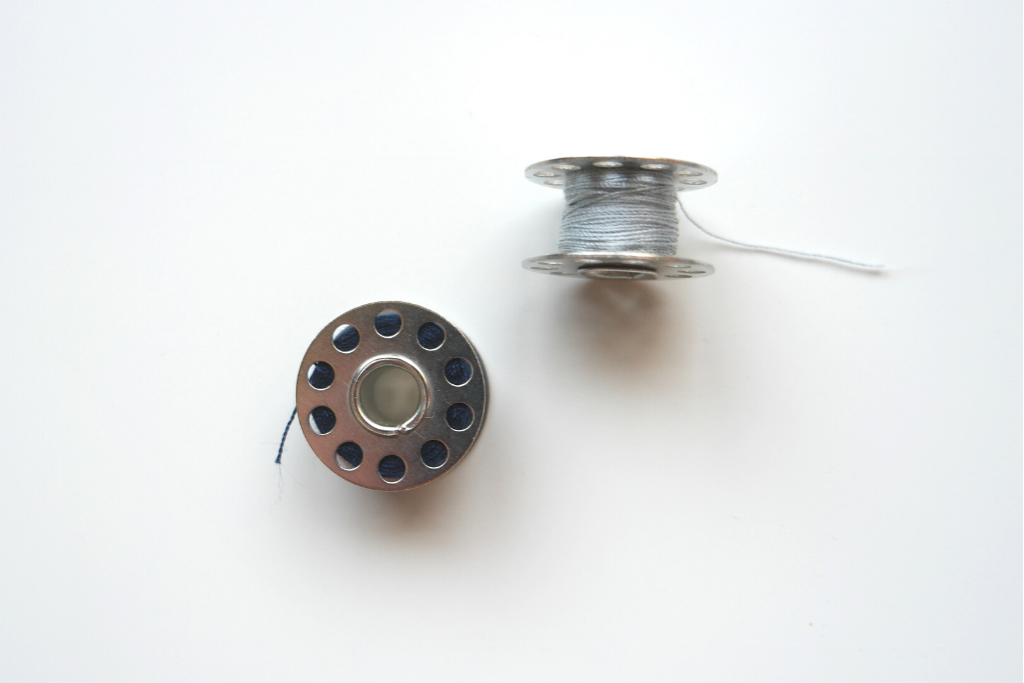
The thread on the bobbin makes the underneath stitches on your sewing. It lives in the lower part of your sewing machine. Sometimes it will be accessed via a little door at the front of your machine. On other sewing machines, there will be a removable panel next to the needle plate.
Bobbin Case
The bobbin case holds the bobbin inside the sewing machine. On the sort with a door in the front, it will probably come out with the bobbin. On the top loading kind, the bobbin case will be attached to the inside of the machine and you’ll only to need to remove the bobbin, not the case as well.
Foot Pedal
The foot pedal controls the speed of your sewing. On my sewing machine, you have to press quite hard to make it go fast, which makes it easier to use. It varies from machine to machine, so it’s a good idea to try it out before starting a sewing project.
If there’s anything you think I’ve missed, please mention in the comments below and I’ll add it to the list!
You might be interested to know that I have a Pinterest board of tips and tricks for sewing here.
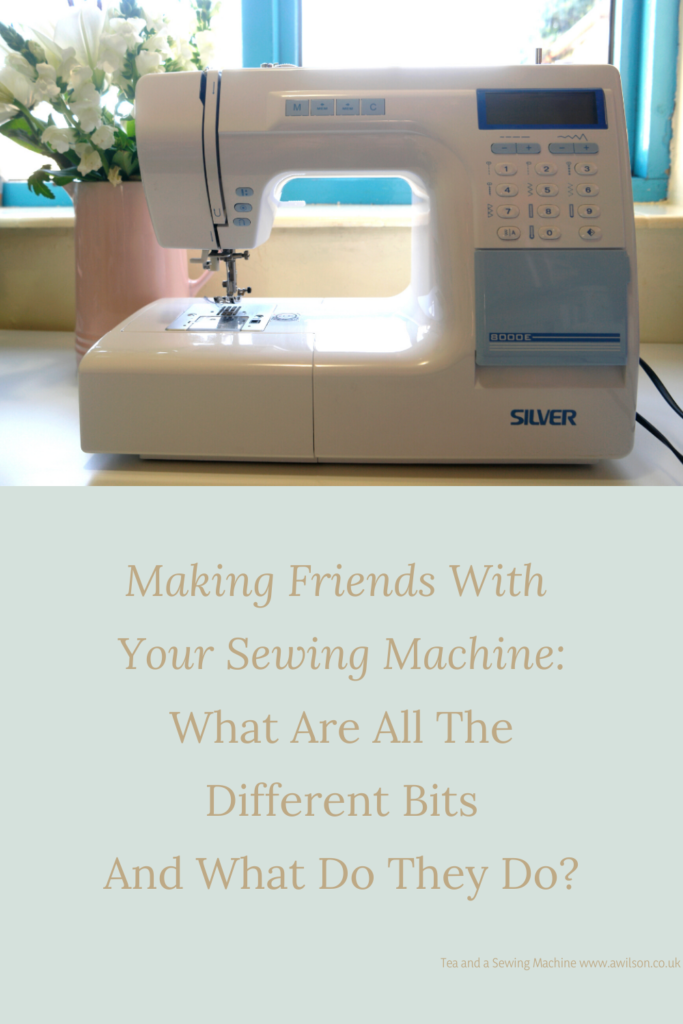
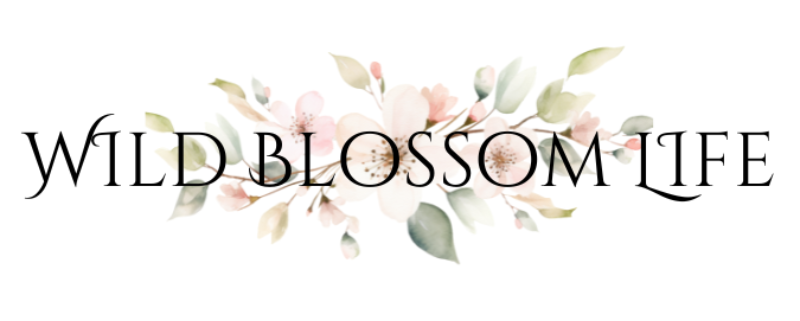
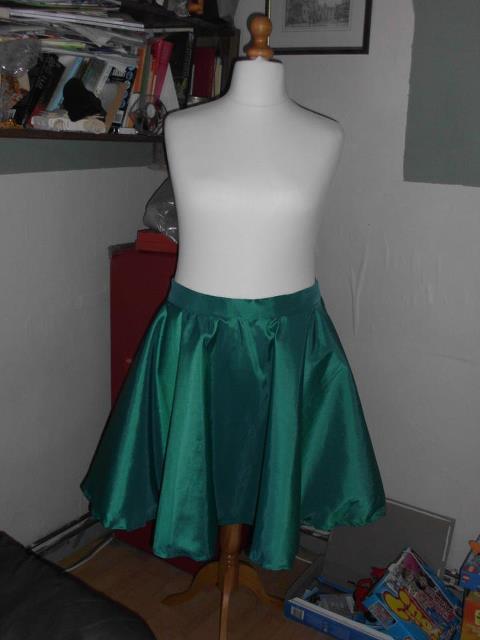
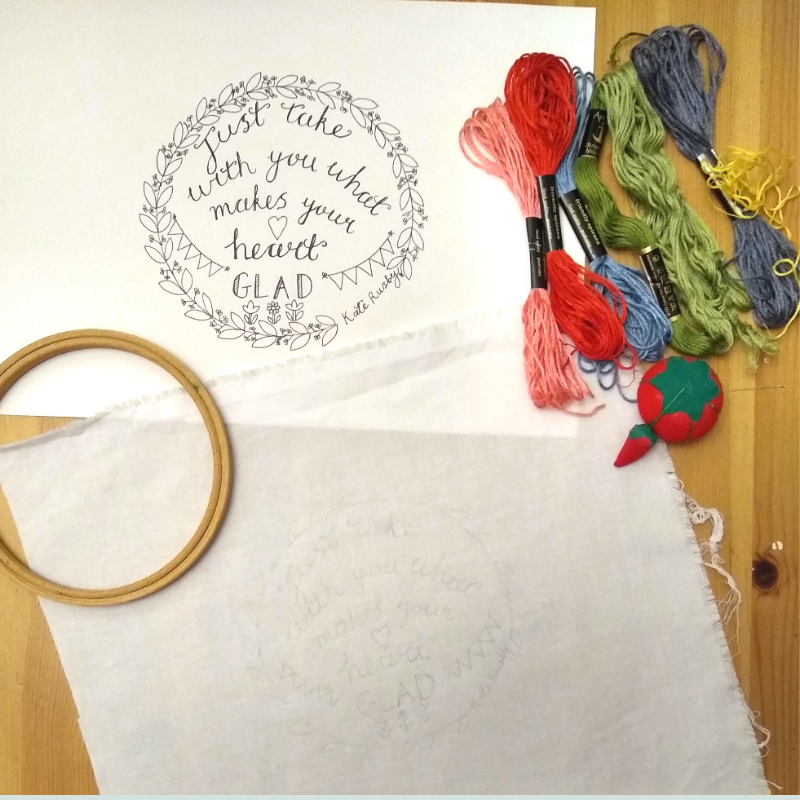
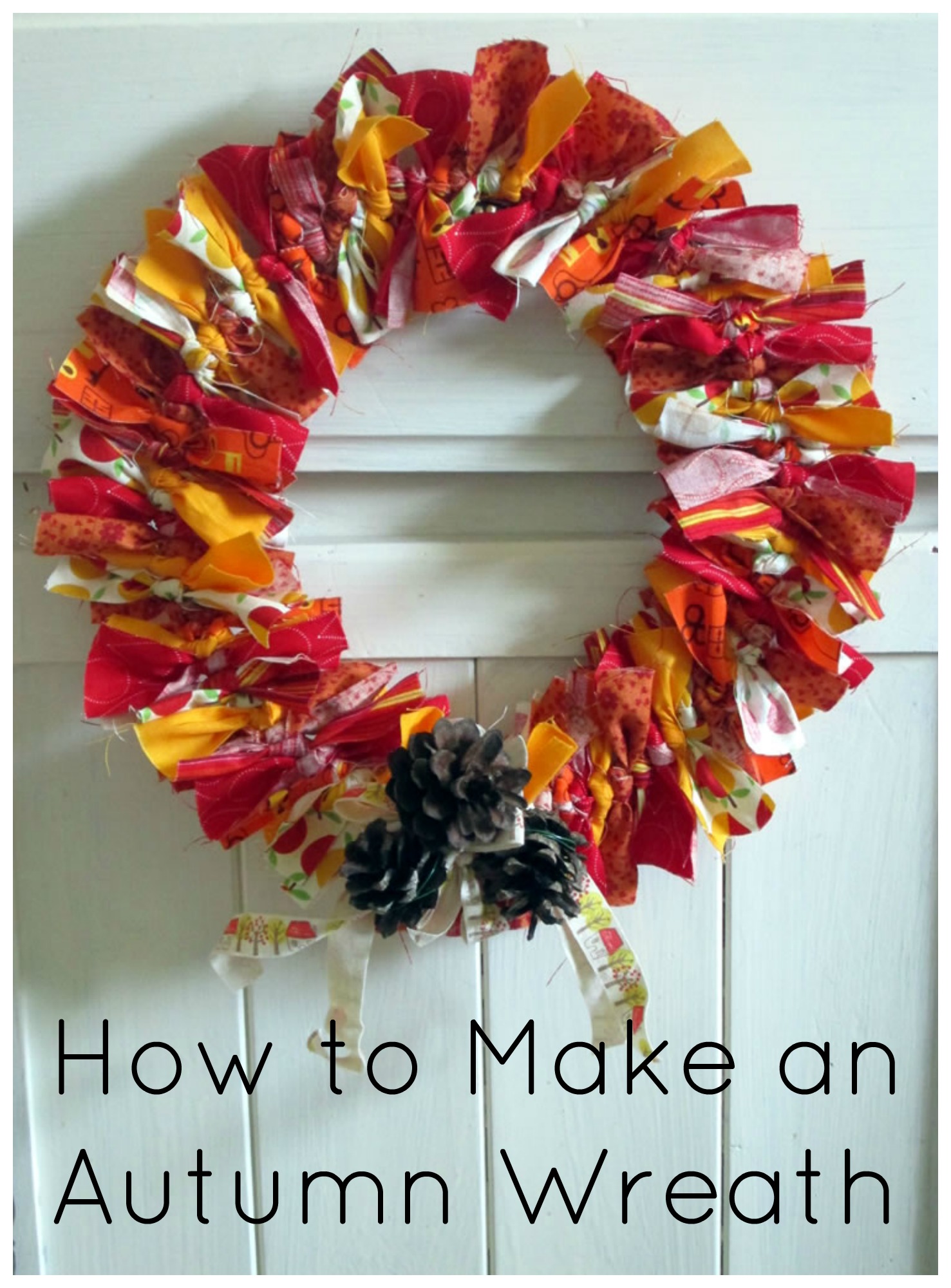
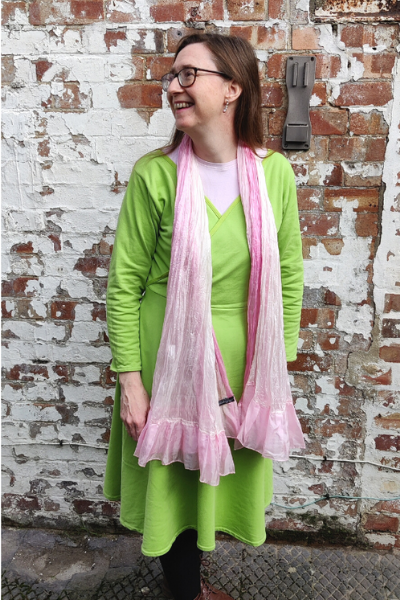
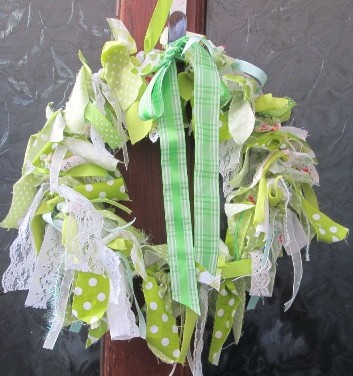
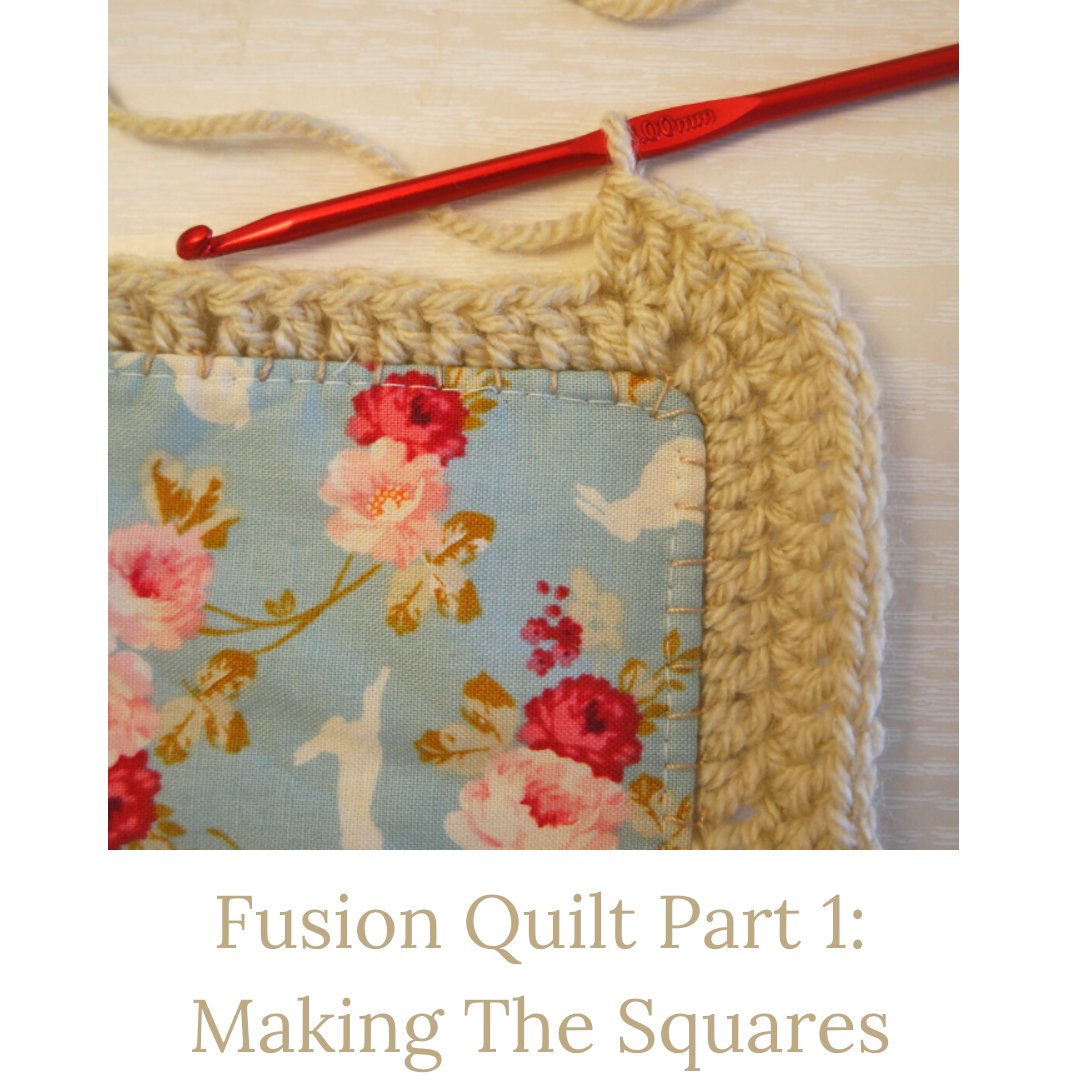
Hi Anna,
Very nice introduction to sewing machines, great explanations and awesome pictures! Thanks
Denisa recently posted…How To Tie Off A Stitch (Quick Guide)
This was SO helpful and informative. I’m probably at an intermediate skill level, and almost everything you said was useful and new info for me.